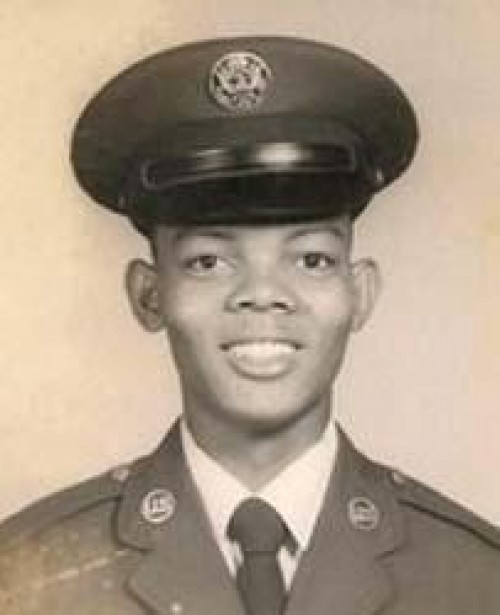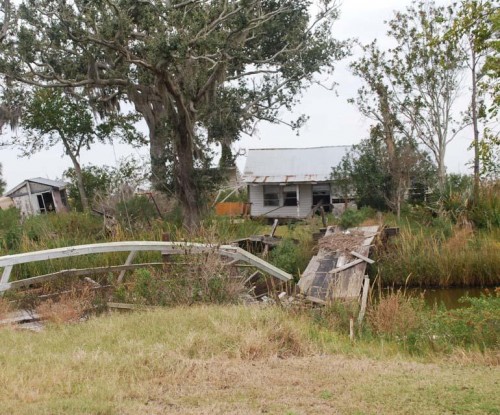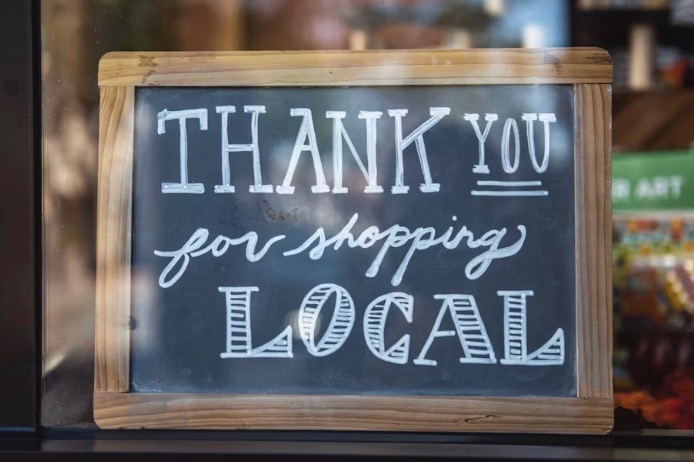
Donald J. Carter Sr.
January 15, 2010
Thibodaux Chamber hosts awards banquet
January 19, 2010As Isle de Jean Charles slowly disintegrates into the Gulf of Mexico, residents have struggled with the decision to stay or go. Each incoming hurricane rips roofs off of homes and peels families that are unwilling or unable to rebuild away from the ancestral homeland. The ongoing diaspora has forced the leaders of the community to figure out a way to maintain both a community and an identity for the Native Americans that inhabit the island.
That process has been made even more painful as two competing tribes have stepped up to claim the people of the island as their own. Both tribes are fighting for membership and federal recognition as the island’s days of supporting a community dwindle away. Lost in the mix is the true identity of the people of the Isle de Jean Charles.
For decades, islanders were considered part of the United Houma Nation.
“The people of the island have always been a part of our history and the UHN,” said Brenda Dardar Robichaux, Chief of the United Houma Nation.
As of 1995, however, Albert Naquin has been the Chief of the Isle De Jean Charles Band of the Biloxi-Chitmacha Confederation of Muskogees (BCCM), which represents much of the island.
“We were always told as kids that we were Choctaw and Chitimacha,” said Naquin, “How we got stuck in the Houmas is, in the late 60’s or early 70’s, they came around and said all the Indians have to sign a form saying they’re Indians to get more money for the schools. So we signed up. Next thing you know they’re counting us as Houmas.” The BCCM is also known as the Biloxi-Chitimacha-Choctaws of Louisiana.
The split, caused in part by the process of gaining federal recognition, has created acrimony in both tribes, and divides the people of the island even in its most perilous hour.
A House Divided
The schism developed in 1994, when the United Houma Nation was given a preliminary rejection by the Bureau of Indian Affairs for federal recognition. They claimed that the 18,000-member nation did not have a cohesive, continuous ancestry as required for federal recognition. Federal recognition requires a tribe to prove seven requirements. The UHN was turned down for failing to meet three of those requirements.
“There is no evidence of an ancestral UHN community, Indian or non-Indian, prior to 1830. There is no evidence that the petitioner is genealogically, socially, or politically connected to the historical Houma Indian tribe, or any other tribe of Indians,” reads the proposed negative finding for the United Houma Nation.
“When Bureau of Indian Affairs findings came out in December 1994, something like 80 or 85 percent of the tribes weren’t considered Houma,” said the United Houma Nation’s Historian Michael Dardar. In fact, the BIA’s findings quoted one historian that claimed the name Houma was a generic term for several tribes that had intermixed in the area.
The BIA’s findings said that some of the smaller bayou communities included in the UHN met some of the requirements the Houma’s failed to meet, and within a few months, those groups started to split off in order to try to gain federal recognition on their own.
“Back in December of 1994 we met with two representatives from the Bureau of Indian Affairs, and they told us that we were definitely not Houma Indians,” said Ernest Dardar, the historian for the BCCM. ” So what we did was, we called the BIA and we told them about the situation. And they said we can’t tell you to split, but that you’d have a better chance of recognition if you did.”
The quest for federal recognition has caused a bitter divide between the two tribes. They’ve been put into competition for membership, authenticity, and ultimately, federal funding.
The Houmas claim that the BCCM isn’t a legitimate group, and only exist as a front to gain recognition.
“They were very aware that they were Houmas until 1995 when we received a negative finding from the BIA,” said Robichaux. “That’s when they splintered off. Up until that time, there was no BCCM Isle De Jean Charles Band. They were Houmas.”
Michael Dardar of the United Houma Nation, said, “The Bureau of Indian Affairs basically said, ‘What kind of Indian do you want to be?’ So the BCCM constructed an identity that they thought would be beneficial to their recognition efforts.”
According to both tribes, federal recognition allows tribes to receive federal funding for things like education, housing, health care, and disaster relief funding. The biggest draw, however, would be funding to rebuild after hurricanes, or in the case of the BCCM, money to move to a new location.
“Another big benefit is that we would receive benefits directly from agencies like FEMA,” said Robichaux. “After Katrina, FEMA came to our tribe at that time and said they’d like to help us, but they couldn’t.”
“Without federal recognition, basically we don’t get anything. It’s just like individual help,” said Naquin. “With Federal recognition, they can give us aid directly.”
In 2008, however, the BCCM was also given a preliminary rejection letter on their federal recognition efforts. The Office of Federal Acknowledgement, which took over the recognition process from the BIA in 2003, rejected BCCM for failing to meet four of the seven requirements – even more than the UHN. Although both tribes are appealing their initial findings in a process that is known to take decades, the process has opened up a rift on the island at what can only be described as an inopportune time.
Moving or Losing?
In hopes of keeping the island community together, and perhaps even drawing old members back into the fold, Naquin has proposed relocating the island’s residents to a planned community on higher ground. The plan is still conceptual and funding the project remains a high hurdle.
Most people give the island about 10 years, or one good storm, before the Isle de Jean Charles finally sheds its last inhabitants. Already, many of the islands homes lay in piles of rubble or twisted lumber up on stilts. Naquin said conditions on the island were so bad after Hurricane Ike that he had to ask state inspectors not to condemn the entire island. The island’s population has dwindled from over 300 at its peak down to about 70.
“I’m trying to restore the community as it was, because if we keep on going like we’re going, we’re just going to be here and there like everybody else,” said Naquin. “If I had the money I’d do it myself. Getting the money, that’s been the hardest part.”
The plan has wide support on the island, according to Naquin, but residents can’t agree on when to move. Ideally, Naquin would like a place where all the people of the island could move to when they’re ready, but without some kind of external funding, the community would have to pool its money together all at once.
Naquin’s push to get the community to move as a whole has led some to accuse him of trying to force people out of their homes.
“I don’t know who he thinks he is to actually say something like that, saying, ‘You’ve got to go.’ But that’s just me,” said Lora Ann Chiasson, a United Houma Nation Councilwoman who’s father owns the marina on the island. “The one’s that aren’t leaving aren’t going anywhere, no matter what he says.”
Naquin insists he’s never tried to force anyone off the island, residents seem split based on which they claim they claim as their own: Houmas prefer to stay, and BCCM members want to go.
The latest debate over moving off the island once and for all underscores the role inter-tribal politics has started to play on the island.
The competition between the two tribes has made much on the island difficult, including figuring out exactly who belongs to which tribe. Naquin says about 80 percent of the island’s residents are his, but the Houmas disagree.
“We’ve actually done a study door to door to check our tribal roll to see how many people belong to the UHN. In our assessment almost half of all the people on the island were a members of the UHN,” said Robichaux. “Are they choosing to have dual membership? We don’t know that. But I know that they are on our tribal roles.”
The fight for membership has gotten so intense that the BCCM has accused the Houmas of buying its members in times of need. They’ve recently gone as far notarizing their membership, and are threatening to sue the United Houma Nation if they continue to try to sway membership.
“They came through after Gustav and said they’d give people $1,000 for hurricane relief, but they had to sign up to be Houmas. So what they’re doing is trying to bribe the people to go back with them. And that isn’t right,” said Naquin.
The Houmas, however, say they’re only trying to help out people they still consider part of their tribe.
“I think it’s kind of typical Albert [Naquin] comment. The UHN has received funds to be able to provide relief for our citizens,” said Robichaux. “In order to receive these funds you have to be a member of our tribe.”
Regardless of the tribes’ troubles, most of the problems seem to have started after federal recognition began to play a role. With such adverse effects, some have wondered whether the process of recognition is fair to struggling tribes.
Recognition process debated.
Both tribes recognize that the other is only trying to do what’s best for their people.
“We have our opinion and they have theirs,” said Naquin. “They’ve gotta to what they’ve gotta do, and so do we.”
Robichaux mirrored that sentiment, saying, “We’re just working really hard to try and provide resources to our citizens. Albert wants what’s best for his community in his eyes, just like we do”
But, she also expressed frustration that, in trying to do the best for her people, they’ve been torn apart.
“We’re looking at brothers and sisters aunts and uncles – whole families that are pledging allegiance to the United Houma Nation or the BCCM. But we’re all part of the same family, and it’s very disheartening to see because it is one family,” said Robichaux. “This is part of what this federal recognition has done. It’s real unfortunate the federal government would still have a hand in our community and would choose to divide and conquer our people this.”
Bureau of Indian Affairs spokesperson Nedra Darling said that the recognition process is determined by federal law, and that it can’t recognize tribes simply because they do good work.
“The Department did not divide up a petitioning group, and the UHN petitioner has not yet provided evidence to demonstrate that it constitutes an existing Indian tribe within the meaning of Federal law,” said Darling in an email to the Tri-Parish Times.
“The Department accepted the letters of intent from the Biloxi, Chitimacha Confederation of Muskogees, Inc. and from the Pointe-aux-Chenes Indian Tribe because it was in the best interest of the Indians to do so. To do otherwise would mean that the Department might deprive two continuously existing Indian tribes of Federal acknowledgment if they were artificially subsumed by a larger entity that could not meet the seven mandatory criteria,” she said.
Despite having switched from the Houma Nation to the BCCM, island resident Doris Naquin said that she wasn’t troubled by changing her identity because her new identity is more authentic.
“Sooner or later you’re going to have to address who you are, because your background is going to show it, and why not go back to where you rightfully belong? I don’t see how I can go wrong because I come from the Choctaw Indians,” said Naquin.
For Naquin, the matter of authenticity is more important than federal recognition status.
“I’d rather be not recognized as anything because I’m not going to sell myself to anyone, when I know I’m Choctaw,” said Naquin. “I’ll just go to my grave knowing I’m Choctaw. I believe that I’m Choctaw because my grandfather said we were, and he was the chief.”
As island dwellers look to a bleak future, their past is being torn up by a bureaucratic tussle. Not only do they have to contend with leaving the only community and way of life most of them have ever known, they’ve also had to ponder which tribe they want to represent their heritage as the last of an entire race.
Although every hurricane season’s brings the threat of complete devastation, island residents continue to wait. They’re waiting for the government to either helped them move their community or rebuild the barrier islands that once protected. They’re waiting for one tribe to finally be given a legitimate claim to the island’s past and future, and they’re waiting for the last big storm to decide the island’s fate once and for all.
An abandoned house remains in tatters more than a year after hurricanes Gustav and Ike hammered the island. * File Photo / Tri-Parish Times












